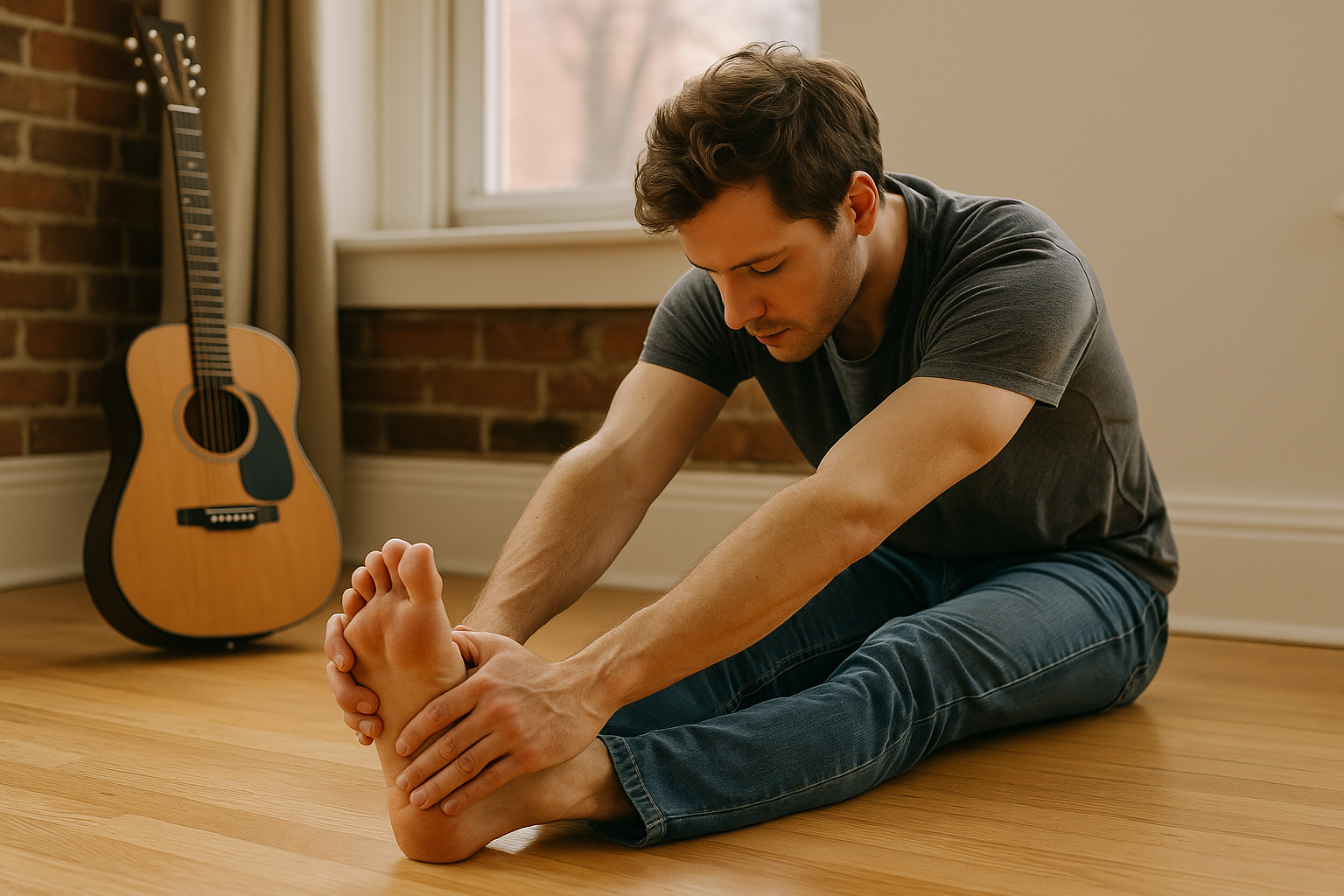When people imagine musicians, they often think of artistry, creativity, and emotional expression. What many forget is that playing an instrument is also a physical activity. Just like athletes, musicians rely on their bodies to perform precise and repetitive movements, sometimes for hours at a time. This physical demand can lead to tension, discomfort, or even injuries if the body is not properly prepared. That’s why stretching is not just helpful but essential for musicians at every level.
In this article, we’ll explore why stretching matters, how it prevents injuries, what types of stretches are most useful, and how to incorporate them into a daily practice routine.
Why Stretching Matters for Musicians
Reduces Risk of Injury
Repetitive strain injuries (RSIs) are common among musicians. Stretching loosens muscles, increases blood flow, and reduces the chance of conditions like tendonitis or carpal tunnel syndrome.
Improves Flexibility and Range of Motion
Stretching helps fingers, wrists, shoulders, and other joints move more freely. This flexibility makes playing more comfortable and efficient.
Enhances Endurance
Looser muscles tire less quickly, allowing musicians to practice and perform longer without pain.
Promotes Relaxation
Stretching encourages mindfulness and relaxation, which not only helps the body but also reduces performance anxiety.
Improves Technique
Greater flexibility leads to smoother transitions between notes, better posture, and more control over dynamics and articulation.
Common Areas of Tension for Musicians
- Neck and Shoulders: Carrying tension here restricts movement and causes discomfort.
- Wrists and Hands: Constant small motions on piano, guitar, or violin stress these areas.
- Back: Sitting for long periods strains lower and upper back muscles.
- Legs: Pianists and drummers often experience leg fatigue from pedaling.
Stretching as Part of a Musician’s Routine
Stretching should not be seen as optional but as part of daily practice. Ideally, musicians should:
- Stretch before playing to prepare the body.
- Take short stretching breaks during long sessions.
- Stretch after playing to release built-up tension.
Practical Stretches for Musicians
1. Neck Rolls
Gently roll your head in circles to release neck tension. Move slowly and avoid straining.
2. Shoulder Shrugs
Lift shoulders toward your ears and release. Repeat several times to loosen the upper body.
3. Wrist Flexor Stretch
Extend one arm forward with the palm up. Use the other hand to gently pull fingers downward. Hold for 15–20 seconds.
4. Wrist Extensor Stretch
Extend one arm forward with the palm down. Pull fingers upward gently. Hold for 15–20 seconds.
5. Finger Stretch
Spread fingers wide, then close into a fist. Repeat to increase blood flow.
6. Back Stretch
Sit upright and slowly twist your torso to each side, holding for several breaths.
7. Leg Extensions
For pianists and drummers, extend one leg at a time while sitting to prevent stiffness.
8. Breathing Stretch
Inhale deeply while raising arms above your head, then exhale slowly while lowering them. This combines physical and mental relaxation.
How Long and How Often to Stretch
- Before Practice: 5–10 minutes of gentle stretches.
- During Practice: Short 1–2 minute breaks every 30–40 minutes.
- After Practice: 5 minutes of relaxing stretches to release tension.
Consistency matters more than intensity. Gentle, regular stretching is more beneficial than rare, intense sessions.
Mistakes to Avoid
- Overstretching
Stretching should be gentle. Pain indicates overextension. - Ignoring Warm-Up
Stretching cold muscles too aggressively can cause strain. Begin with light movement first. - Skipping Stretching When Busy
Even two minutes of stretching is better than none. - One-Size-Fits-All Approach
Different instruments place stress on different areas, so tailor stretches to your needs.
Stretching for Different Instruments
- Pianists: Focus on wrists, fingers, and back.
- Guitarists/Violinists: Stretch shoulders, wrists, and neck to reduce tension from holding instruments.
- Wind/Brass Players: Prioritize posture stretches for back and chest to support breathing.
- Drummers: Emphasize legs, shoulders, and wrists for balance and stamina.
- Singers: Stretch neck, shoulders, and ribcage to support vocal production.
The Connection Between Stretching and Mental Focus
Stretching is not only physical but also mental. Taking time to breathe deeply and move slowly resets your focus. Many musicians find that beginning practice with stretching clears distractions and sets a calm tone.
Real-Life Examples
- Professional Pianists often stretch wrists and shoulders before rehearsals to prevent strain during long sessions.
- Orchestra Members regularly take stretching breaks during rehearsals, especially for instruments requiring repetitive finger motion.
- Touring Musicians use stretching as part of their pre-concert rituals to reduce travel fatigue and prepare for performance.
Long-Term Benefits of Stretching
- Reduced risk of repetitive injuries.
- Greater comfort during long practice sessions.
- Improved technique through freer movement.
- Enhanced focus and relaxation.
- Longer, healthier musical careers.
Final Thoughts: A Musician’s Body Is an Instrument Too
Musicians often focus so much on their instruments that they forget their most important tool: the body. Stretching keeps this instrument flexible, resilient, and ready to perform.
Whether you are a beginner practicing for 20 minutes a day or a professional preparing for concerts, stretching should be a non-negotiable part of your routine. Just a few minutes before and after practice can make the difference between struggling with tension and enjoying music with freedom and ease.
By treating your body with the same care you give your instrument, you not only protect yourself from injury but also unlock the full potential of your musical expression.
